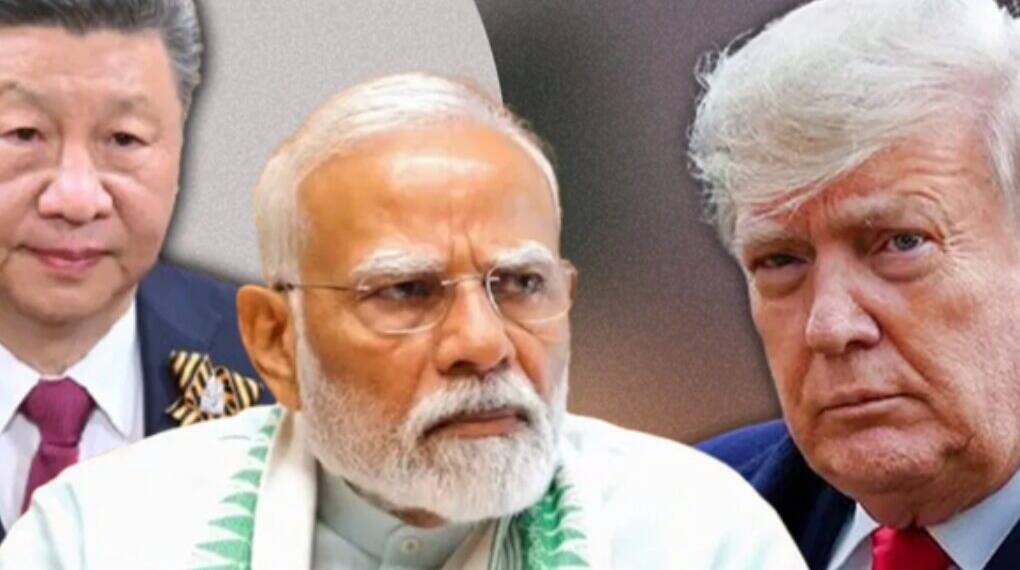In March 2025, as U.S. President Donald Trump intensified his global trade war with tariffs reaching up to 250% on certain goods, Chinese President Xi Jinping made a discreet yet significant diplomatic move.
According to a Bloomberg report, Xi sent a confidential letter to Indian President Droupadi Murmu, urging New Delhi to align with Beijing to counter Washington’s aggressive trade policies. T
his clandestine outreach, revealed five months later, marks a pivotal moment in India-China relations, signaling a cautious reset driven by shared economic pressures and geopolitical recalibrations.
The Letter: A Roadmap for Cooperation
Xi’s letter, later relayed to Indian Prime Minister Narendra Modi, outlined a strategic roadmap to navigate Trump’s tariff onslaught. It emphasized coordinated trade measures to mitigate the economic fallout from U.S. policies, which were squeezing both Beijing and New Delhi.
The letter also referenced an unnamed “key individual” who could facilitate a deeper understanding between the two nations, though Bloomberg withheld their identity, adding an air of intrigue to the diplomatic maneuver. Xi’s call for rebuilding bilateral ties was particularly notable, given the strained relations following the 2020 Galwan Valley clash.
The outreach was kept highly confidential, reflecting Beijing’s delicate position. Facing severe economic pressure from Washington, Xi sought to bolster China’s global standing by securing India’s tacit support, ensuring Beijing did not appear isolated or weakened on the world stage.
Why India? A Strategic Pivot
China’s decision to reach out to India was driven by necessity. Trump’s tariffs, which hit both Chinese and Indian exports, created a common economic challenge. Beijing recognized India’s growing global influence and its potential to offset U.S. pressure.
By proposing collaboration, Xi aimed to forge a united front against Washington’s trade policies, leveraging India’s economic weight as the world’s fifth-largest economy. The letter also expressed concerns about U.S.-India deals that could undermine Chinese interests, highlighting Beijing’s strategic unease.
India’s Measured Response
New Delhi’s response was characteristically cautious. For three months, India maintained complete silence, reflecting its strategic restraint and reluctance to rush into alignment with China, given the history of border tensions and mistrust.
It was only in June 2025, as U.S.-China trade tensions began to ease, that India opened diplomatic channels. Indian Foreign Minister S. Jaishankar and National Security Adviser Ajit Doval visited Beijing, while Chinese Foreign Minister Wang Yi reciprocated with a trip to New Delhi.
These exchanges marked the beginning of a tentative reset in India-China ties, with both sides agreeing to expedite measures like resuming direct air travel and fostering exchanges between media and think tanks.
This diplomatic thaw culminated in Prime Minister Modi’s planned visit to China for the Shanghai Cooperation Organization (SCO) Summit on August 31, 2025—his first trip to the country in seven years since the Galwan Valley clash. The timing of the visit underscores India’s willingness to explore new trade understandings with China while signaling a subtle message to Washington.
Trump’s Strategic Missteps
Analysts cited by Bloomberg point to two critical errors by Trump that inadvertently pushed India closer to China. First, Trump’s claim that Pakistan had agreed to a ceasefire with India—a statement that infuriated New Delhi due to its inaccuracy and perceived interference in India-Pakistan relations—strained Indo-U.S. ties.
Second, Trump’s imposition of 50% tariffs on Indian exports, particularly in response to India’s continued purchase of discounted Russian oil, eroded decades of goodwill between Washington and New Delhi. These missteps risked alienating India, a key U.S. partner in South Asia, and created an opening for Beijing to strengthen ties with New Delhi.
A New Asian Balance
The India-China rapprochement, sparked by Xi’s secret letter, has broader implications for global geopolitics. As Trump’s tariff policies strained relations with both nations, Beijing and New Delhi found common ground in their shared economic challenges.
The diplomatic engagements that followed, led by figures like Ajit Doval and Wang Yi, reflect a pragmatic approach to overcoming past hostilities. The agreement to intensify efforts to resolve long-standing border disputes further signals a willingness to move beyond the 2020 clashes.
Prime Minister Modi’s upcoming SCO Summit visit to China, where he will meet Xi Jinping and Russian President Vladimir Putin, underscores the emergence of a redefined Asian balance. This shift, precipitated by external pressures from Trump’s trade war, highlights the complex interplay of economic and geopolitical interests in the region.
Xi Jinping’s secret letter to President Droupadi Murmu in March 2025 was a calculated move to navigate the turbulent waters of Trump’s tariff war. By reaching out to India, China sought to counter U.S. economic aggression while rebuilding strained bilateral ties.
India’s cautious response and subsequent diplomatic engagements reflect a strategic recalibration, driven by shared challenges and a desire to maintain autonomy in a shifting global order. As Modi prepares to visit China, the world watches closely, recognizing that this quiet reset could reshape the calculus of U.S.-China-India relations in the years to come.








